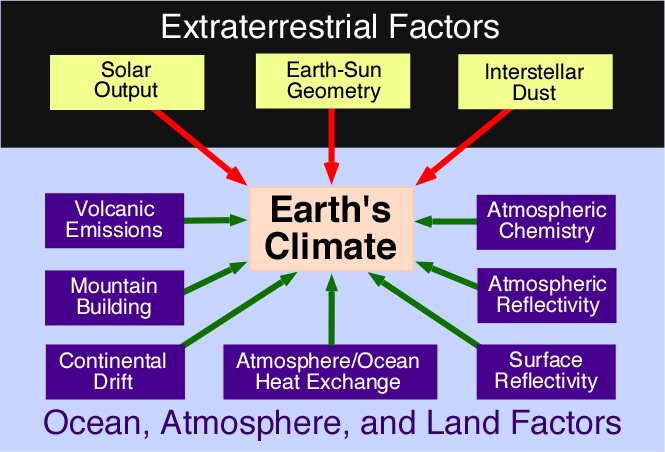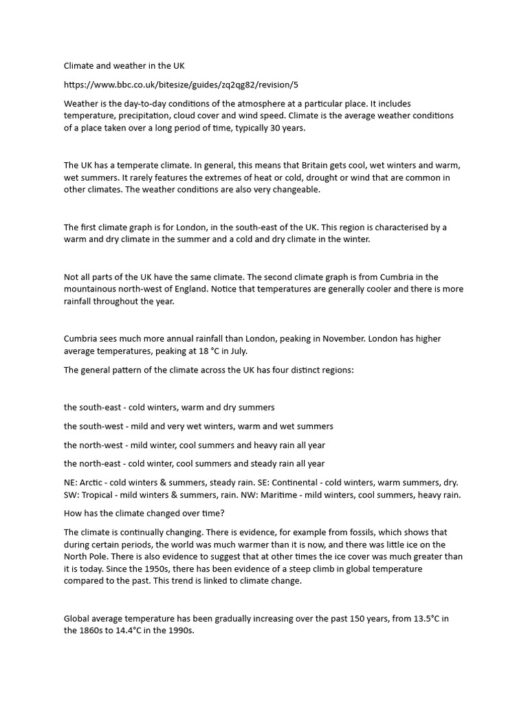Climate change is often perceived as an immediate consequence of human activity, yet a comprehensive examination reveals that natural phenomena have played a profound role in long-term climate shifts throughout Earth’s history. Understanding these natural causes fosters a broader perspective on climate change and piques curiosity about the complex interplay between Earth’s systems. This discussion unravels the various natural factors that contribute to climate change, particularly emphasizing geological, astronomical, and ecological influences.
Geological Processes
Geological activities, especially volcanic eruptions, bear significant weight in the narrative of long-term climate change. When volcanoes erupt, they emit copious amounts of sulfur dioxide, ash, and carbon dioxide into the atmosphere. Sulfur dioxide forms sulfuric acid droplets that act as a veil against sunlight, resulting in short-term cooling effects. However, the CO2 released contributes to the greenhouse effect, intensifying warmth over extended periods. Historical eruptions, such as the eruption of Mount Tambora in 1815, led to the “Year Without a Summer,” showcasing the immediate climatic disruptions these geological phenomena can engender.
Additionally, the movement of tectonic plates plays a crucial role in Earth’s climatic evolution. The configuration of continents influences oceanic currents and atmospheric circulation patterns. Over millions of years, continental drift has facilitated glacial epochs and interglacial periods. For instance, during the Pangaea supercontinent era, the uniform landmass affected wind patterns and ocean currents, resulting in distinct climatic zones. This underscores the dynamism of Earth’s geological fabric and its capacity to serve as a propulsion system for climate change.
Astronomical Influences
Our planet dances in rhythm with celestial bodies, and the intricacies of this dance significantly impact climate. Variations in Earth’s orbit, known as Milankovitch cycles, dictate the distribution of solar energy across the globe. These cycles encompass eccentricity (the shape of Earth’s orbit), axial tilt (the angle of Earth’s axis), and precession (the wobble of Earth’s axis). Each cycle operates over thousands to hundreds of thousands of years, fundamentally altering climatic patterns.
These astronomical factors have historically ushered in ice ages and warming periods. During peak periods of eccentricity, the Earth’s orbit becomes more elliptical, leading to variations in seasons’ intensity and duration. In contrast, axial tilt changes both the angle and amount of sunlight received at different latitudes, generating substantial shifts in temperature and weather patterns. Thus, the rhythmic dance of Earth through space plays as much a role in climate as does terrestrial activity.
Ocean Currents and Climate
The world’s oceans significantly impact climate stability and change. Ocean currents, such as the Gulf Stream, transport warm water from the tropics towards the poles, influencing regional and global climates. Changes in salinity and temperature can alter current patterns, resulting in shifts in climatic conditions. Events such as El Niño, which manifests through warmer oceanic temperatures in the central and eastern Pacific, can trigger catastrophic weather events worldwide, from droughts to severe floods.
Additionally, the interaction between ocean currents and atmospheric conditions can create feedback loops that amplify climate change. For example, warmer ocean temperatures can lead to increased evaporation, raising humidity levels and intensifying storms. This interdependence highlights the intricate relationship between oceanic processes and climate dynamics.
Ecosystem Responses
Ecosystems, too, exhibit remarkable resilience or vulnerability to climate shifts. Natural phenomena, such as forest fires, can serve as both a catalyst and a consequence of climate change. While fires can temporarily release carbon stored in forests, they often promote regeneration and biodiversity. However, the frequency of uncharacteristically large and intense fires, exacerbated by climate warming, poses severe risks to ecosystems and atmospheric carbon levels.
The role of vegetation in climate regulation should not be undervalued. Forests act as carbon sinks, possessing the potential to sequester vast amounts of carbon dioxide. However, ecological responses to changing climates, including shifts in species distributions and ecosystem boundaries, can drastically influence this capability. The interplay between flora and climate demonstrates how ecosystems adapt, but it simultaneously underscores their fragility in the face of rapid changes that can outpace natural adaptation.
Conclusion: A Tapestry of Influences
To fully comprehend climate change, one must appreciate the myriad natural phenomena contributing to long-term alterations in Earth’s climate systems. Geological processes like volcanic eruptions and tectonic movements, astronomical cycles affecting solar exposure, ocean currents dictating temperature distributions, and the intricate responses of ecosystems all intertwine within a complex tapestry of influences. Recognizing these natural causes does not diminish the significance of human-driven climate change but rather enriches our perspective, encouraging deeper inquiry into the balance of forces shaping our world. An acknowledgment of natural phenomena not only cultivates curiosity but also emphasizes the urgency in addressing contemporary climate challenges while respecting the planet’s historical climactic ebbs and flows.







